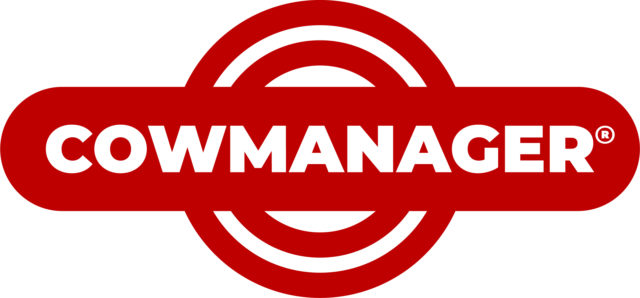During the farm crisis of the 1980s, the term “cash flow is king” drove home the importance of using cash flow to pay debt. That’s still important as we continue to ride the cycles of the industry, but a projection of earnings is equally important. As the calendar transitions to 2025, diving into the question of “why both?” becomes a point of discussion. Let’s explore why each is important, how they’re related and the real answer as to why both.
Before getting started on both the cash flow budget and projected earnings statement, you’ll need to spend some time developing realistic assumptions for the projections. This will require some backward- and forward-looking activities. That is, looking back to see historical production data as well as timing of events, and looking forward at projected costs, projected sales prices and production data given the current conditions.
The goal is to develop a set of good, consistent, understandable and believable assumptions. Be careful about being either too conservative or too optimistic as either approach could lead to poor decisions. As you prepare your key assumptions, one filter to consider could be the following: Given the current market conditions and historical data from my operation, would another operator with the same information make the same assumptions? The goal is to be consistent and realistic in your assumptions.
Cash flow budgeting
Once you have your assumptions in place, it’s time to build a cash flow budget. The goal is to predict the timing and source of all actual cash coming into and leaving the operation. The key points here are all sources and uses of cash for the operation. This begins with cash coming in and going out in the normal course of business. It also includes all uses and sources of cash from investing activities – that is, capital asset purchases or sales. It also includes the cash impact of either borrowing or paying back debt. Of course, this budget should also take into account any owner capital contributions or withdrawals. The bottom line is that the net cash flow is the result of all these activities and should reconcile to the change in cash account balances.
The biggest reason for doing a cash flow budget is to make sure you have adequate cash available at the right time. Predicting and planning for when and how cash comes and goes from your operation improves your ability to identify where the shortfalls will be. This gives you the size and timing of a period when cash is needed. The ability to predict the need and timing of increased borrowing or use of cash reserves to solve for these periods is critical to the success of the operation.
Projected earnings
If cash flow is king, then earnings must be queen. The earnings statement differs from the cash flow statement in several key areas. First, the earnings statement does not account for debt added or paid off. Depreciation is often considered a capital cost included in the earnings statement, but it’s not a cash event in the earnings statement. Rather, it’s a way of spreading out the cost of the assets you put to work to make money over the life of that asset. (We could have a long conversation about depreciation and how it’s actually a cost, but we’ll leave that for another time.)
Second, the earnings projection takes into account the inventory changes during the year with a goal of tying all costs and sales of production to the same period. For example, a growth in feed inventory is a revenue source despite not creating a cash event. This is because the costs associated with growing the crop that increased the inventory occurred during the same period. Cattle inventories, changes in prepay balances and changes in accounts payable/receivable are treated in a similar manner. For questions on this, refer to the Farm Financial Standards Council website to review their accounting guidelines.
The bottom line is that the accrual adjustments are attempting to ensure accounting for all sources of revenue and costs of production during the period, regardless of whether cash changed hands. To complete an earnings projection accurately, you’ll need a good starting balance sheet for the period you’re projecting for, along with using the activity throughout the year to change that balance sheet into a period ending/projected balance sheet. Essentially, an earnings projection requires that a projected balance sheet also be completed.
While the cash flow answers the questions of when, where and how will cash move in your business, the earnings statement addresses how profitable your business is. For example, if I had a business projecting a positive cash flow of $963,000, I would feel pretty good. But if that business was also reporting a decrease in feed and cattle inventories of $1.2 million, I would have some serious questions about how long that business is going to be around. The reality is, you can generate a positive cash flow by selling down inventories to pay debt, but in the end, you no longer have the feed for the cows to generate profits.
So what steps can you take to ensure your projections are accurate?
- Scenario planning: The best operators shock test their budget and projection. That is, what happens in a best- and worst-case scenario? What risk management tools can I employ to limit my exposure to a worst-case event?
- Frequent and consistent updating: If you’re going to only do one at the start of the year, do the cash flow budget first and update it frequently to account for market changes and condition changes. Remember, when you’re out of cash, you’re out of business, so it’s crucial to understand where those tight spots are and communicate them with your team and your banker. That information will help all be better prepared for it. Second, generate the earnings projection and accompanying projected balance sheet so you can see if you are generating profits for true long-term viability of the operation.
- Monitoring: The best operators revisit their budgets and projections on a regular basis. They ask themselves, "What went worse than the plan, and how can we fix it? What went well, and how can we repeat it? What needs to be adjusted in our plan given the latest conditions?"
While the road ahead may have many pitfalls and potholes, having a complete understanding of both the projected cash flows and projected profitability of an operation will give the best managers a road map for developing strategies for long-term financial sustainability.
This article is provided for information purposes only. Readers should consult their own professional advisers for specific advice tailored to their needs. Information contained in this article may be subject to change without notice.










